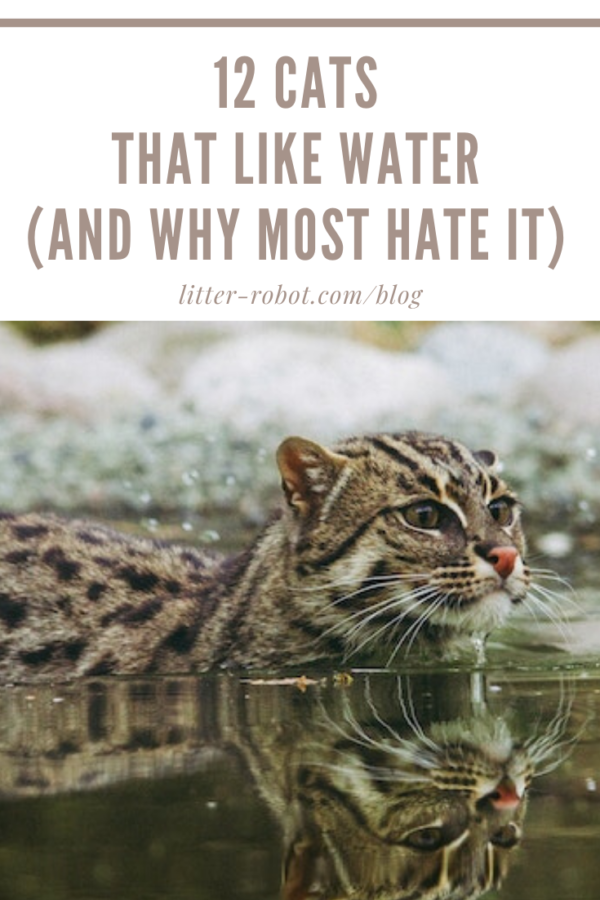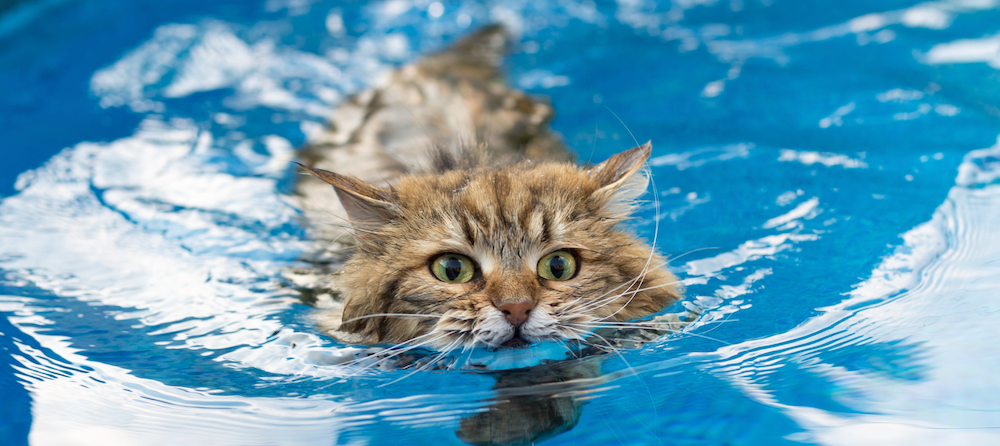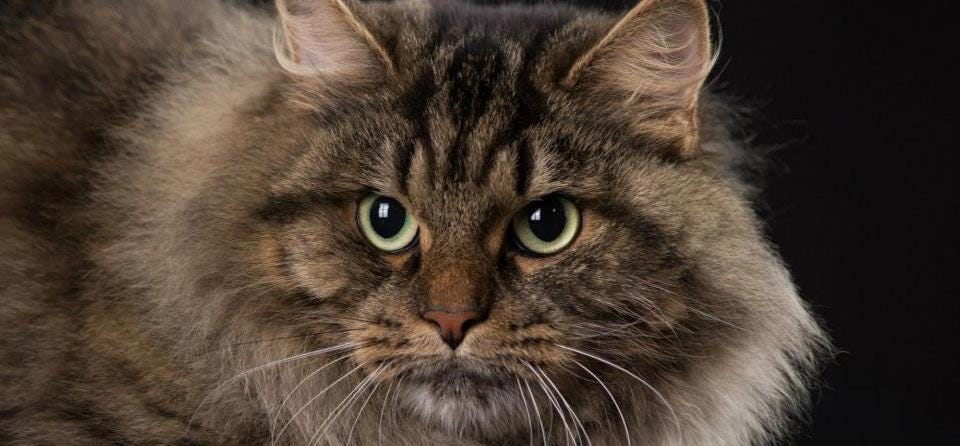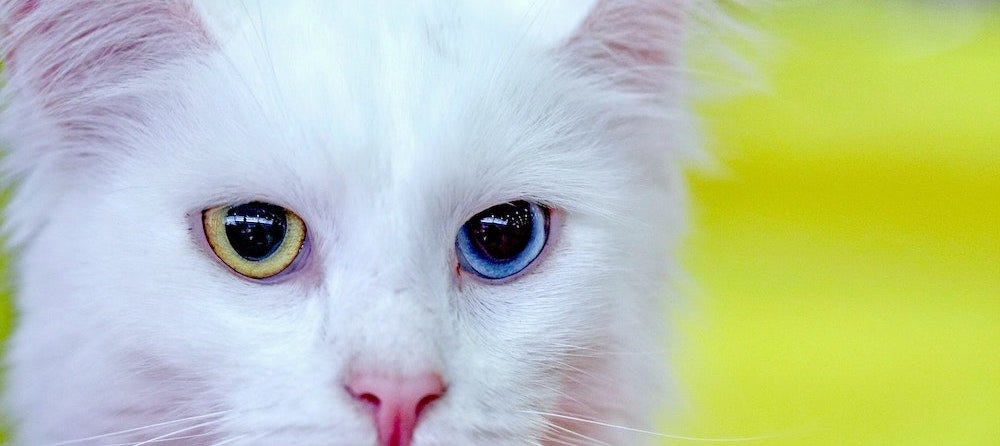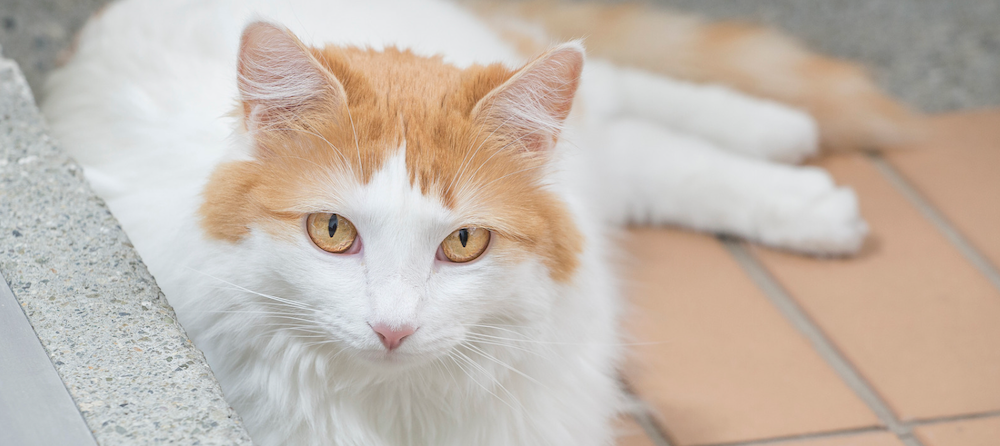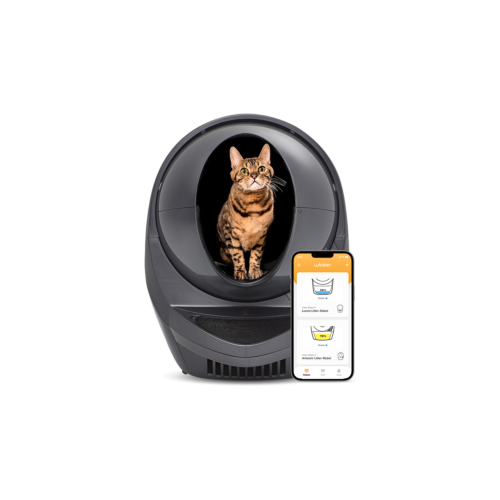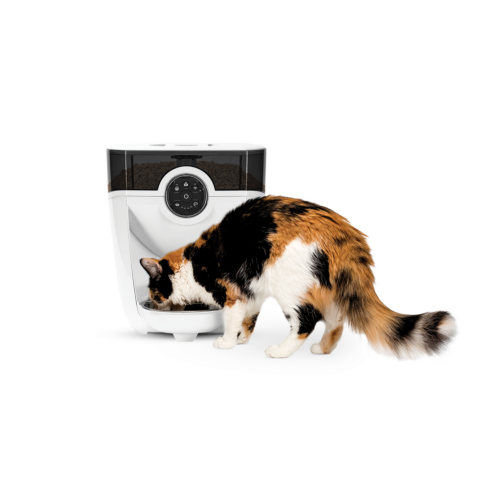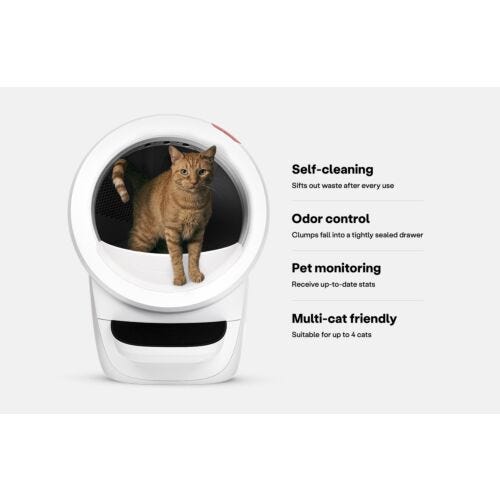Updated April 9, 2024
Anyone who has had a cat knows that they aren’t usually compatible with water. In fact, flicking liquid at your cat is kind of like flicking holy water at a vampire. Yet, there is always that surprising kitty that delights in all things H₂O. Learn more about 9 cats that like water!
Why don't cats like water?
Maybe as a kid you “nudged” your cat into the tub just to see how they’d react… Or flicked water while washing the dishes… Or aimed the hose while watering the flower beds. No matter what kind of water torture you inflicted on your feline, you probably observed a strong, melodramatic aversion to water. So, why do cats hate water so much? Read on to find out the answer.

Biological instinct
A lot of cats strongly dislike water due to biological instinct: Cats are not, and never have been, very exposed to large amounts of water. Dr. Justine Lee, DVM, explains that most breeds of cats descended from the desert climates of the world, and were unlikely to ever go for a swim. While some large, wild cats like tigers and jaguars love to swim and frolic in the water to cool off, other large cats like lions don’t even want to stick their head underwater.
However, a recent study confirmed that certain wild cats are more comfortable with water and swimming than was once believed: GPS tracking showed that some mountain lions will swim a mile or more from the mainland of Washington State and hop between uninhabited islands in Puget Sound.
Moisture-absorbent coats
Another reason why our feline friends usually hate water? Most domestic cats have fur coats that absorb rather than deflect moisture and only a few water-loving cat breeds have water-repellent coats. That means that once the average house cat is wet, they’re wet for a long time. Not only does this feel uncomfortable for your cat, it also makes their fastidious grooming habits more difficult to achieve. An all-around bummer!
How rare is it for a cat to like water?
While it's certainly not unheard of for some cats to enjoy water, it is relatively rare in the feline world. It's estimated that only around 10% of domestic cats have a natural inclination towards water, making it quite a unique trait.
Most cats prefer to stay dry, with their affinity for water largely dependent on their breed and individual personality. However, there are exceptions to the rule. Certain breeds, as we'll discuss next, are more inclined to enjoy water than others.
Can cats swim?
Yes! Ironically, while most cats aren't usually fond of water, they are naturally good swimmers. Their agile bodies and sharp claws provide excellent propulsion in water.
However, because of their strong dislike for water, they don't often exercise this ability unless absolutely necessary. Early exposure to water and positive reinforcement can influence a cat's comfort level with swimming.
Cats that like water
Cat behavior is famously unpredictable so any kitty can surprise you with a fascination with water. However, there are also 9 cat breeds that like water more than the average feline. Many of these breeds sport water-resistant fur, so naturally they’re more comfortable being wet!
Turkish Van
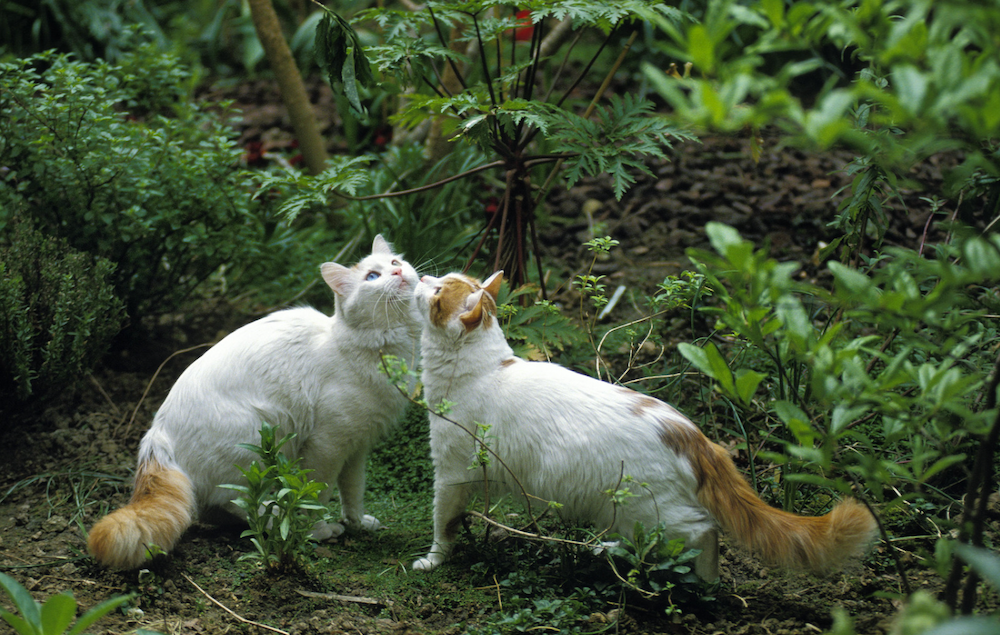
The Turkish Van is known as the “Swimming Cat.” This rare and ancient breed is naturally fond of water and takes their name from Lake Van in southeastern Turkey. They have a single coat of water-resistant fur with no undercoat, and often display what is called the “Van pattern”: an all-white body with coloring on the face or tail.
While this breed is rarely exported outside their homeland of Turkey, you won’t soon forget it if you’re lucky enough to come across one. In addition to their swimming abilities, Turkish Van cats will flaunt their energy by launching themselves into the air, catching toys mid-flight, and bouncing from one surface to the next. (They’re agile but can also be clumsy.) Their fascination with water might land them in trouble at home—so keep the toilet seats down and don’t be surprised if you find a running faucet!
Turkish Angora

Cousin to the Turkish Van, the Turkish Angora cat is also an excellent swimmer. These beautiful cats likely originated in the cold, mountainous regions of Turkey. The long hair of this breed is a staple in the region that they hail from, with long-haired Angora rabbits and long-haired goats. They tend to have heterochromia as well, or different-colored eyes.
The Turkish Angora is an active breed that needs plenty of play. They like to chase after toys, pounce at anything moving quickly, and can be trained to walk on a leash. This special breed might even plunge into a swimming pool or bathtub with you.
Siberian
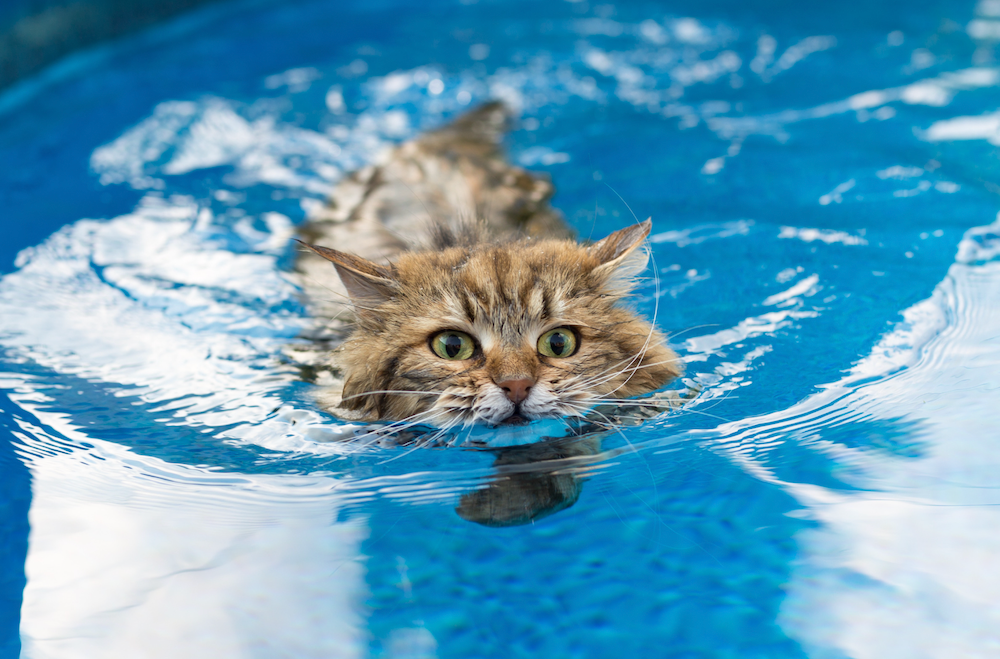
A Siberian cat’s fascination with water probably stems from their thick triple coat, which protected their ancestors during the hard winters of their native Russia. In fact, it’s thought that the mutation for long-haired cats started in Russia, where the cats made their way south to Turkey to create the Angora cat and then to Persia to create the Persian cat. If this is the case, the Siberian cat breed is one of the oldest cats to exist—perhaps the oldest long-haired cat ever!
This breed is very active and requires a lot of play. They are highly intelligent and may need more stimulation than other cats. Siberian cats will often swat at running water coming from a faucet, jump into a shower that has water droplets still in the tub, and drop their toys in the sink while you are doing dishes.
Bengal

The exotic-looking Bengal cat is highly active, intelligent, and good at learning tricks. Many Bengal pet parents note how much their pets love their pool, fountain, or pond. Bengal cats will even follow their pet parents into the shower or lounge around the tub if they’re taking a bath. Get used to having company in the bathroom!
In addition to their fun personality, this breed stands out for their rosette-spotted coat, which is short, dense, and very soft to the touch. Officially recognized colors of purebred Bengals include brown, silver, and snow, while “unofficial” colors include charcoal, blue, and melanistic (black).
Maine Coon

Maine Coons are gentle giants with heavy, water-resistant coats that lend themselves to playing in water. They have thick and protective fur that helps keep them warm in the winters and well-regulated in the summers. Their coats aren’t as much work as you might think, and with regular brushing, you should be able to keep these glorious floofs tangle-free.
Besides their interest in water, the Maine Coon breed are excellent hunters; this comes from their history of being barn cats, and they like to be given tasks or learn new tricks. This breed also tends to be very low-maintenance.
Egyptian Mau
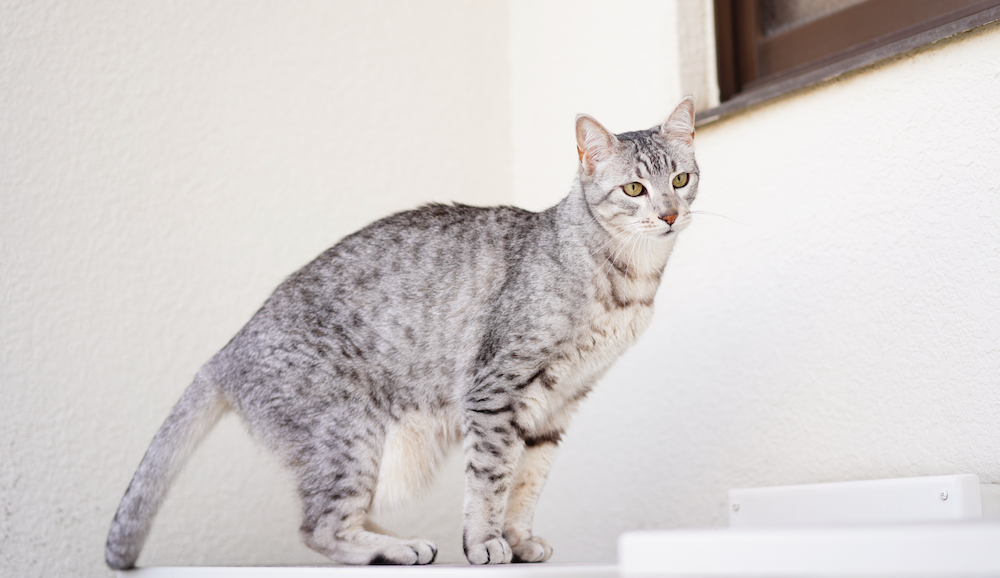
As one of the most energetic and adventurous cat breeds, it’s no surprise the Egyptian Mau enjoys playing in water. These naturally spotted cats are lengthy and graceful, with long hind legs that give them the appearance of walking on their tip-toes. They’re considered the fastest domestic cat breed, with the ability to run up to 30 miles per hour!
It’s likely that the cat that the Egyptian Mau is a predecessor of the cats that lived with the ancient Egyptians for hundreds of years. This also makes the Egyptian Mau one of the oldest known domestic felines. In fact, "Mau" is actually the Egyptian word for cat!
Highlander

This bobtail cat is highly energetic, playful, and affectionate. The Highlander cat’s love for water is right on par with their inquisitive nature. They’re a newer man-made breed, crossed between the experimental Desert Lynx breed and the Jungle Curl.
Highlanders are intelligent and can learn how to play fetch and walk on a leash. Both of these activities can help to keep your Highlander occupied and entertained. While walking them on a leash outdoors, you might want to lead them to a pond or creek and gauge their reaction—chances are, they’ll take right to the water.
Norwegian Forest cat

With their water-resistant overcoat and dense undercoat, the Norwegian Forest cat is known for traversing harsh conditions—including through water in cold Scandinavia. This cat likely waded into bodies of water to fish for meals (before they were welcomed into homes as pets, that is!).
Not only did the ancestors of Norwegian Forest cats frolic in water with ease, they were used to faring the high seas. These cats likely traveled with the Vikings, keeping their ships and villages free of vermin. And while their ancestors regularly braved wet winters, today’s Norwegian Forest cat is more than happy to be living a life of luxury.
Savannah

The large and adventurous Savannah cat takes very well to a leash and to water. This breed retains the strong hunting instincts passed down by their wild parent breed, the African serval. Perhaps their love of water stems from the serval’s preference to live in areas close to water bodies, such as wetlands and the savanna.
The Savannah will paddle around in water much like a dog, and indoors you’ll likely notice them hanging around bathtubs and splashing around in their water bowls. These cats require a lot of exercise, play, and interaction, but this domestic breed is the closest thing to an exotic big cat you can (legally) own!
Why do cats hate water? Well, not all of them do! Cats that like water may be few and far between—and are therefore very special.
Introducing water to your cat
Just like humans, cats can also be taught to swim from a young age, but it's quite rare due to their natural aversion to water. Even if your cat isn't naturally inclined to enjoy water, there are ways to make bath time a less stressful experience. If you’re not sure how to bathe a cat that hates water, for example, take it step by step:
- Start by introducing water slowly and in a controlled environment. A sink or small tub with a couple of inches of warm water can be a good starting point.
- Allow your cat to investigate and get used to the water.
- Make sure the water is warm, not hot or cold, as cats are sensitive to extreme temperatures.
- Use a gentle stream from a hand-held sprayer, ensuring it's not too powerful or loud as to scare your cat.
- Always reassure your cat during the process, speaking in a calm and soothing voice.
- Offer treats or toys as a distraction. They can also help in creating a positive association with water.
- Be patient and don't force the situation. If your cat is extremely resistant or frightened, this could lead to an even stronger aversion to water.
While the majority of cats may not be fans of water, there are those few and far between that defy the norm. If you happen to own one of these water-loving felines, consider yourself lucky! You're in possession of a truly special kitty.
Photo credits:
- Turkish Angora: Sergey Semin via Unsplash
- Highlander: © DigitalDirt / CC-BY-SA-4.0
